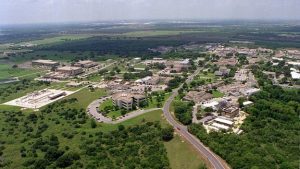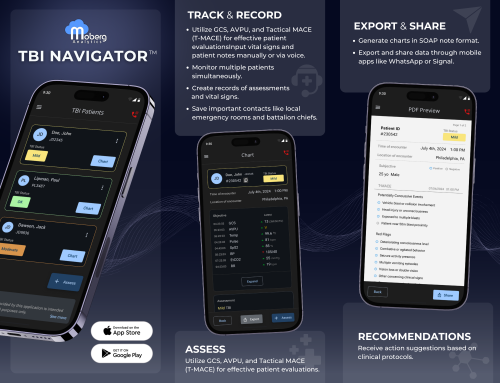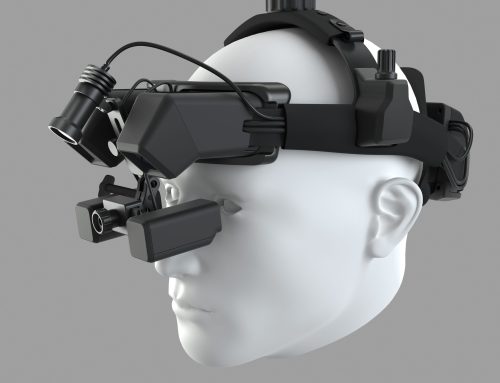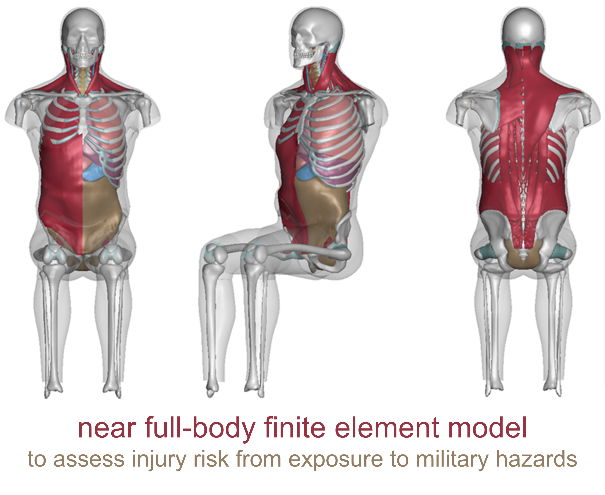 The team at Southwest Research Institute (SwRI) is developing computational models to assess injury risk in Warfighters resulting from exposure to various military hazards. The SwRI team has recently developed several models for injury risk analysis for 1) rib fracture during behind-armor blunt trauma, and 2) lumbar spine injury during long-flight missions. This effort is supported by the Office of Naval Research (ONR) and funded through MTEC’s Request for Project Proposals (Solicitation # 18-04-I-PREDICT) for predicting incapacitation (reduction in the ability to move, shoot, and/or communicate). This project is led by Dr. Daniel Nicolella (SwRI) with key personnel including Drs. Matthew Davis (Elemance), Rob Salzar (University of Virgina), Dale Bass (Duke University), and Brian Stemper, Narayan Yoganandan, and Frank Pintar (Medical College of Wisconsin).
The team at Southwest Research Institute (SwRI) is developing computational models to assess injury risk in Warfighters resulting from exposure to various military hazards. The SwRI team has recently developed several models for injury risk analysis for 1) rib fracture during behind-armor blunt trauma, and 2) lumbar spine injury during long-flight missions. This effort is supported by the Office of Naval Research (ONR) and funded through MTEC’s Request for Project Proposals (Solicitation # 18-04-I-PREDICT) for predicting incapacitation (reduction in the ability to move, shoot, and/or communicate). This project is led by Dr. Daniel Nicolella (SwRI) with key personnel including Drs. Matthew Davis (Elemance), Rob Salzar (University of Virgina), Dale Bass (Duke University), and Brian Stemper, Narayan Yoganandan, and Frank Pintar (Medical College of Wisconsin).
Injuries remain one of the largest health problems for the United States Armed Forces with statistics revealing that 10% of military personnel were hospitalized for serious injury in recent conflicts. These injury threats to the Warfighter will continue to evolve in future multi-domain operations, requiring technological advancements in injury prevention and treatment, medical response planning, and equipment design. In particular, the military is concerned with injuries sustained as a result of blunt impact and blast pressure, and especially Behind Armor Blunt Trauma (BABT), which is a non-penetrating injury resulting from the rapid deformation of a Warfighter’s armor. In response, advanced computational modeling provides a powerful, high-throughput, and cost-effective approach to investigate these new threats, risks, and potential personal protection equipment (PPE) design.
The SwRI team has developed a highly complex, probabilistic, near full-body finite element model with several hierarchies of validation starting from tissue level material properties up to whole body system responses. With this probabilistic model, they have developed a rib fracture injury risk analysis for BABT in both male and female body types. The model is flexible in that it can be adapted to assess injury risk in new and emerging threats. For example, in addition to BABT, SwRI has begun adapting their model to assess risk of lumbar spine injury sustained during long-duration flight missions. In this case, they implemented 3D active musculature into their model to investigate the ability of muscles to maintain an erect spine during long-duration flight, as well as how rest and recovery influence lumbar spine injury risk.
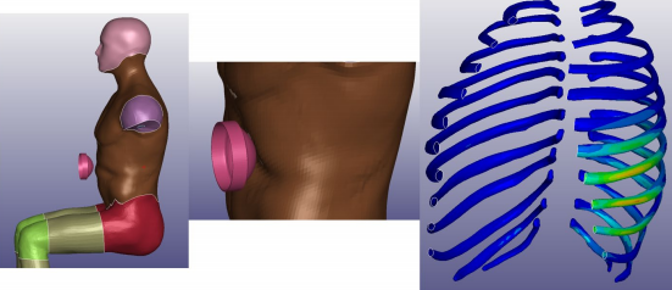 Pictured here is an example of SwRI’s model for Behind Armor Blunt Trauma showing a projectile striking the rib cage. As part of their development, SwRI is running mulitple simulations by varying the projectile velocity, position, and tissue material properties. These simulations will be used to develop probability-of-injury analysis tools.
Pictured here is an example of SwRI’s model for Behind Armor Blunt Trauma showing a projectile striking the rib cage. As part of their development, SwRI is running mulitple simulations by varying the projectile velocity, position, and tissue material properties. These simulations will be used to develop probability-of-injury analysis tools.
SwRI will continue validating the computational model for different use cases and further optimize its stability and robustness. In parallel, they plan to develop a graphical user interface tool to accompany the model that will provide easy-to-use interfacing, advanced injury and risk analysis tools for each body component of interest, and advanced machine learning tools to hasten model outputs by predicting a response based on prior simulations.
About Southwest Research Institute (SwRI):
Southwest Research Institute (SwRI), headquartered in San Antonio, Texas, is one of the oldest and largest independent, nonprofit, applied research and development (R&D) organizations in the United States. Founded in 1947, SwRI provides contract research and development services to industrial and government clients. SwRI is governed by a board of directors which is advised by approximately 100 trustees. SwRI consists of nine technical divisions that offer multidisciplinary, problem-solving services in a variety of areas in engineering and the physical sciences. Over 4,000 projects were active at SwRI at the close of fiscal year 2020. These projects were funded almost equally between the government and commercial sectors. SwRI’s research volume for this fiscal year was nearly $696 million. In 2020, SwRI provided $10 million to fund innovative research through its internally sponsored R&D program.
